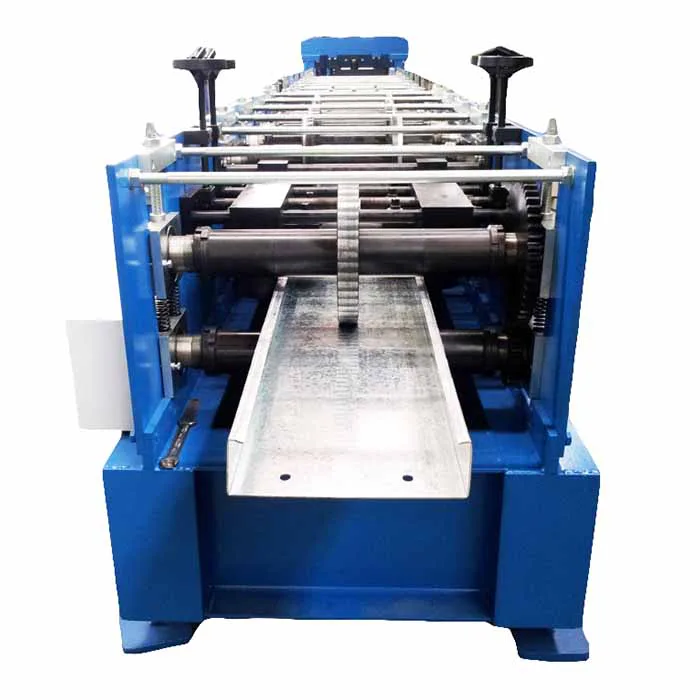
Swaging vs. Other Metalworking Techniques- Why Choose a Swaging Machine for Sheet Metal?
- By:Metmac
- 2024-11-12
- 784
Swaging vs. Other Metalworking Techniques: Why Choose a Swaging Machine for Sheet Metal
Introduction
In the realm of metalworking, precision and efficiency are paramount. When it comes to shaping sheet metal, swaging emerges as a formidable contender, offering unparalleled versatility and cost-effectiveness. This article will delve into the captivating world of swaging, unraveling its advantages over other metalworking techniques and highlighting its exceptional suitability for sheet metal applications.
Understanding Swaging
Swaging is a forging method that employs a series of blows from a mechanical hammer or swaging press to deform a workpiece. The hammer or press strikes a series of precisely contoured tooling called dies, which progressively shape the workpiece into the desired form. Swaging excels at producing intricate shapes, tight tolerances, and smooth, seamless surfaces.
Advantages of Swaging over Other Techniques
1. Precision and Repeatability: Swaging dies are meticulously manufactured to precise dimensions, ensuring consistent results with minimal variations. This precision translates into exceptional part quality and repeatability, crucial for demanding applications.
2. Complexity and Detail: Swaging’s ability to strike multiple blows from different angles allows for the creation of highly complex shapes and intricate details. This flexibility empowers designers to realize innovative and visually stunning designs.
3. Material Compatibility: Swaging can handle a wide range of sheet metal materials, from soft aluminum to hardened steel. This versatility eliminates the need for specialized equipment or complex processes for different materials.
4. Cost-Effectiveness: Swaging is a relatively cost-effective process, especially for high-volume production runs. The use of precision dies minimizes material waste and setup time, resulting in significant savings over alternative methods.
5. Surface Finish: Swaging imparts a smooth and seamless surface finish to the workpiece, eliminating the need for additional polishing or finishing steps. This inherent surface quality enhances aesthetic appeal and functional performance.
Comparison with Other Techniques
1. Stamping: Swaging outperforms stamping in terms of complexity and precision. Stamping is limited to simple shapes, while swaging can produce intricate geometries with greater accuracy.
2. Rolling: Rolling is suitable for forming long, cylindrical shapes but lacks the versatility of swaging. Swaging allows for more complex cross-sections and accommodates a wider range of material thicknesses.
3. Hydroforming: Hydroforming utilizes fluid pressure to shape sheet metal, offering high throughput but limited shape complexity. Swaging provides greater design freedom and the ability to produce smaller, more intricate parts.
4. Laser Cutting: Laser cutting excels at precise and intricate cutting operations. However, it is not suitable for shaping or forming operations, which are swaging’s forte.
Applications of Swaging in Sheet Metal
The unparalleled capabilities of swaging make it ideal for numerous sheet metal applications, including:
1. Aerospace Components: Swaging produces precision parts for landing gear, engine mounts, and other critical components.
2. Automotive Parts: Swaging shapes exhaust systems, body panels, and other components with complex geometries.
3. Consumer Electronics: Swaging contributes to the intricate design and seamless construction of electronic devices such as smartphones and laptops.
4. Medical Devices: Swaging enables the production of precision surgical instruments, implants, and other medical components demanding the highest levels of accuracy.
Swaging stands as an exceptional metalworking technique for sheet metal applications, offering unparalleled precision, repeatability, complexity, cost-effectiveness, and surface finish. By harnessing the power of precision tooling and multiple blows, swaging transforms sheet metal into intricate and functional masterpieces. Whether for aerospace components, automotive parts, consumer electronics, or medical devices, swaging empowers designers and manufacturers to realize innovative and high-quality products. As the demand for precision, efficiency, and complexity in metalworking continues to grow, swaging will undoubtedly remain a steadfast and versatile choice.
-
Metal Sheet Forming Machine: The Engine of Modern Fabrication and the METMAC Standard
2025/12/30 -
Laser Cutting Machine for Steel Plate: Precision Redefined for Modern Fabrication
2025/12/30 -
Metal Curving Machine: Shaping Strength with Precision and the Art of METMAC Engineering
2025/12/30 -
Shear Metal Cutting Machine: Precision, Power, and the METMAC Standard
2025/12/30
-
Advanced Sheet Metal Rolling, Laser Cutting, and Folding Machines for Precision Fabrication
2025/10/31 -
High-Performance Sheet Metal Bending and Cutting Machines for Modern Fabrication
2025/10/31 -
High-Quality Sheet Metal Equipment for Sale: Efficient Solutions for Modern Manufacturing
2025/10/31 -
High-Performance Sheet Metal Equipment for Sale: Forming and Shearing Solutions for Modern Fabrication
2025/10/22
-
Latest Technological Advancements in Rectangular Duct Machines
2024/05/11 -
Integrating Automation with Rectangular Duct Machines for Enhanced Productivity
2024/05/11 -
Metal Shear Machines- Essential Tools for Precision Metal Cutting
2024/05/11 -
Understanding the Role and Function of Steel Strip Slitting Machines
2024/05/11
-
A Guide to the Latest Innovations in Sheet Metal Folding Machines
2024/11/29 -
Key Features to Consider When Investing in a Sheet Metal Folding Machine
2024/11/28 -
Enhancing Precision with Advanced Sheet Metal Folding Machines
2024/11/27 -
How to Choose the Right Sheet Metal Folding Machine for Your Workshop
2024/11/26







